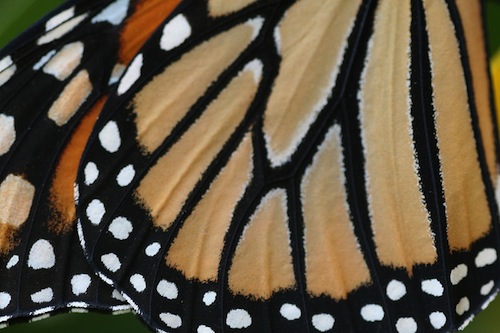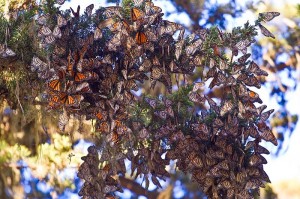 Right now, the butterfly might be coming out. Or it might not. On Thursday, my son’s preschool teacher said that Friday would be the day. On Friday, she said she hoped it would wait until Monday. She and the kids have been marking off the days since the monarch caterpillar stopped munching milkweed and spun its chrysalis.
Right now, the butterfly might be coming out. Or it might not. On Thursday, my son’s preschool teacher said that Friday would be the day. On Friday, she said she hoped it would wait until Monday. She and the kids have been marking off the days since the monarch caterpillar stopped munching milkweed and spun its chrysalis.
The monarch’s chrysalis is green with a few yellow spots like a crown near the top. It hangs on the inside of a soft-sided mesh cage. Every time someone says the word butterfly, it seems, at least one kid jumps up and checks to see whether it has emerged. Waiting is very, very hard.
At this school, they talk about kids who go home with their parents at lunchtime “going south”. The kids who stay and rest after lunch “go north.” When this butterfly emerges, I’m not sure which way it will go. Many of the monarchs spent the winter right here on the coast, roosting in eucalyptus trees where they sometimes stay so still that they look like clusters of dead leaves. In the summer they go north and east, staying on this side of the Rockies. Northbound monarchs are shorter-lived, each generation making a leg of the journey; the migratory generation born in the summering grounds makes the full journey back south.
There’s another, much bigger monarch migration between Mexico and the eastern United States. Right about this time, milkweed plants in the southern states are beginning to fade, and successive generations of monarchs head even farther north along the route, following the trail of blooming milkweed.
 These two populations were once thought to be genetically distinct, but a study last year suggested that they’re more similar to each other than previously thought. Both migrations are threatened by habitat loss, whether in their Mexican wintering grounds or along their migratory route.
These two populations were once thought to be genetically distinct, but a study last year suggested that they’re more similar to each other than previously thought. Both migrations are threatened by habitat loss, whether in their Mexican wintering grounds or along their migratory route.
A host of citizen scientists have been participating in studies that track butterfly abundance and migration and aid in the monarchs’ conservation. These lepidopterists include a group of inmates at Washington’s Walla Walla Penitentiary; they raise the caterpillars and then tag the butterflies so that people on the outside can spot the butterflies and, they hope, learn more about migratory patterns.
There’s a neat video about monarch migration that uses Google Earth to follow the butterflies’ journey. In it, one of the butterfly researchers says she whispers something benedictory to each butterfly as she releases it. I wonder if the inmates do this too. I know it’s the kind of thing that doesn’t matter—not to the science, not to the butterfly or bird—but it does, at the same time—it shows how much the journey means to the people who stay behind.
After the butterfly emerges—today, or tomorrow, or the next day—the preschoolers will peer in at its new orange-and-black wings. When they release it, they’ll probably watch for a while to see which way it flies. And then, soon enough, they’ll return to the swingset and the slide, getting back to their own business of flying.
—
* you’ve probably figured this out by now, but it’s because he wanted to see the butter fly